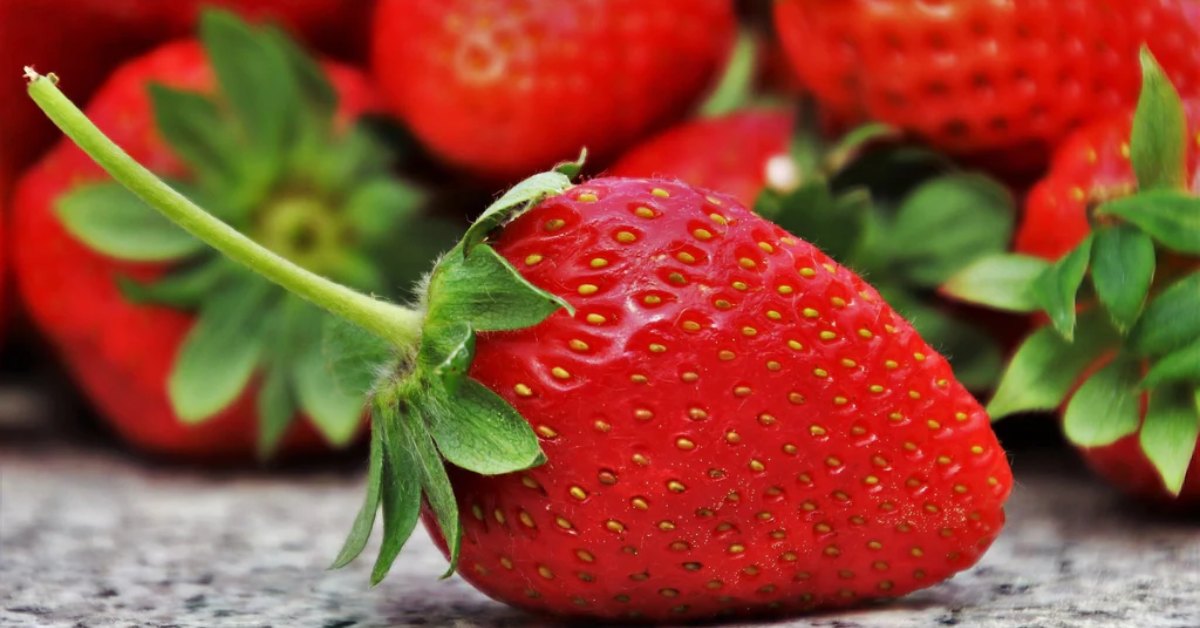Strawberries are undoubtedly one of the most beloved fruits worldwide — sweet, juicy, and rich in antioxidants. But while they’re a favorite on breakfast bowls, smoothies, and desserts, strawberries are also among the fruits most prone to contamination by dirt, pesticides, and harmful bacteria. This fact may surprise many, especially those who assume washing strawberries under running water is enough.
In this blog, we’ll explore why strawberries are susceptible to germs, how they can affect your health, and the best practices for washing and eating them safely.
Why Are Strawberries Likely to Carry Germs?
1. Thin, Porous Skin
Strawberries have a soft and porous outer layer that easily absorbs whatever touches it — from pesticides during farming to bacteria during handling. Unlike bananas or oranges, you can’t peel off the outer layer to avoid contamination.
2. Grown Close to the Ground
Strawberries are ground-hugging fruits. This makes them more vulnerable to coming in contact with soil-borne bacteria, animal droppings, and insects. Rainwater splashes can also carry contaminants from the soil directly onto the fruit.
3. Delicate Structure
Because strawberries are fragile, they’re often harvested and packed by hand. This manual handling increases the chances of human-transmitted bacteria such as E. coli, Salmonella, or Listeria, especially if hygiene isn’t strictly followed during packaging and transport.
4. Moisture-Rich Environment
The high water content and sugar in strawberries make them a perfect breeding ground for bacteria and mold. If stored improperly or kept too long, strawberries can spoil fast, even in the refrigerator.
Common Contaminants Found in Strawberries
- Pesticide Residues: Strawberries often top the “Dirty Dozen” list by the Environmental Working Group (EWG) for having high levels of pesticide residues.
- Listeria Monocytogenes: A bacterium that can thrive even in refrigerated conditions.
- E. Coli and Salmonella: Usually from contaminated irrigation water, poor hygiene, or unclean soil.
- Mold and Yeast: Can grow quickly if strawberries are left unwashed and moist in the fridge.
Health Risks of Contaminated Strawberries
While most people can tolerate minor levels of bacteria, certain groups — like pregnant women, children, the elderly, and those with weak immune systems — may suffer from severe symptoms due to foodborne illnesses. These may include:
- Nausea and vomiting
- Abdominal cramps
- Diarrhea
- Fever
- In rare cases, hospitalization or more serious infections
How to Eat Strawberries Safely: Proven Tips
1. Buy From Trusted Sources
Choose strawberries from reputable grocery stores or organic markets. Check if the fruit is fresh, firm, and free from visible mold or bruises.
2. Rinse Only Before Eating
Do not wash strawberries immediately after buying them if you plan to store them. Washing adds moisture, which accelerates mold growth. Instead, rinse just before consumption.
3. Use a Vinegar Solution for Deep Cleaning
Here’s how to do it:
- Mix 1 part white vinegar with 3 parts water.
- Soak the strawberries for 5 minutes.
- Rinse thoroughly under clean water to remove any vinegar taste.
- Pat dry completely with paper towels.
This method helps remove bacteria, pesticides, and dirt effectively.
4. Dry Thoroughly Before Storing
After washing, make sure the strawberries are completely dry. Moisture speeds up spoilage and mold growth. Store them in a breathable container lined with paper towels.
5. Refrigerate Immediately
Strawberries should be stored in the refrigerator to slow down bacterial growth. Ideally, keep them in the fruit drawer or a clean container with the lid slightly open.
6. Avoid Cutting Before Storing
Cut strawberries spoil faster. Keep them whole until you’re ready to eat. If you must slice them for a recipe, consume them immediately.
Should You Go Organic?
Organic strawberries are grown without synthetic pesticides or fertilizers. While they may still carry natural contaminants like soil or bacteria, the overall pesticide load is lower. If budget allows, choosing organic is a healthier and safer option — especially for kids or frequent strawberry eaters.
Quick Checklist for Safe Strawberry Eating
| Task | Safe Practice |
|---|---|
| Buying | Choose fresh, firm, unbruised berries |
| Washing | Use vinegar + water solution before eating |
| Drying | Pat dry completely before storing |
| Storing | Refrigerate in a breathable container |
| Cutting | Cut only before immediate consumption |
| Organic vs. Conventional | Prefer organic to avoid pesticide exposure |
Conclusion
Strawberries are a healthy and delicious addition to your diet — but only when handled with care. Because of their porous skin, high moisture content, and exposure to soil and human touch, they can easily carry harmful germs if not washed and stored properly.
By adopting simple food safety habits like proper washing, vinegar rinses, and smart storage, you can enjoy strawberries without worry. Whether you’re packing them in your kid’s lunchbox or enjoying them in a dessert, knowing how to clean them right is key to a healthy bite.
So, the next time you buy a bunch of strawberries, remember: a little extra care goes a long way in protecting your health.













Leave a Reply